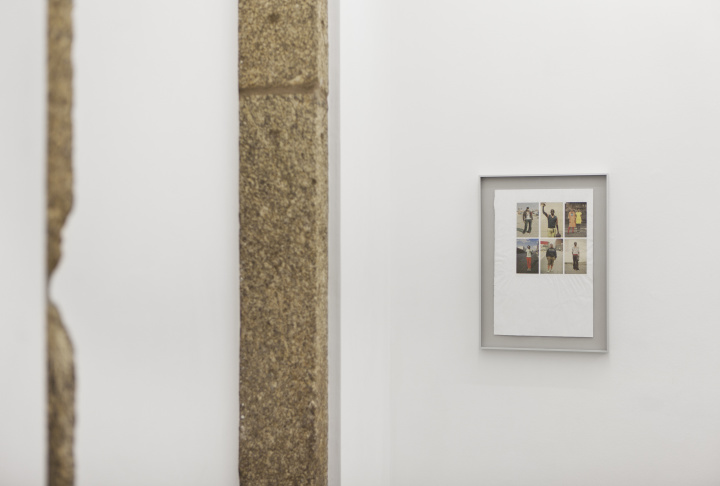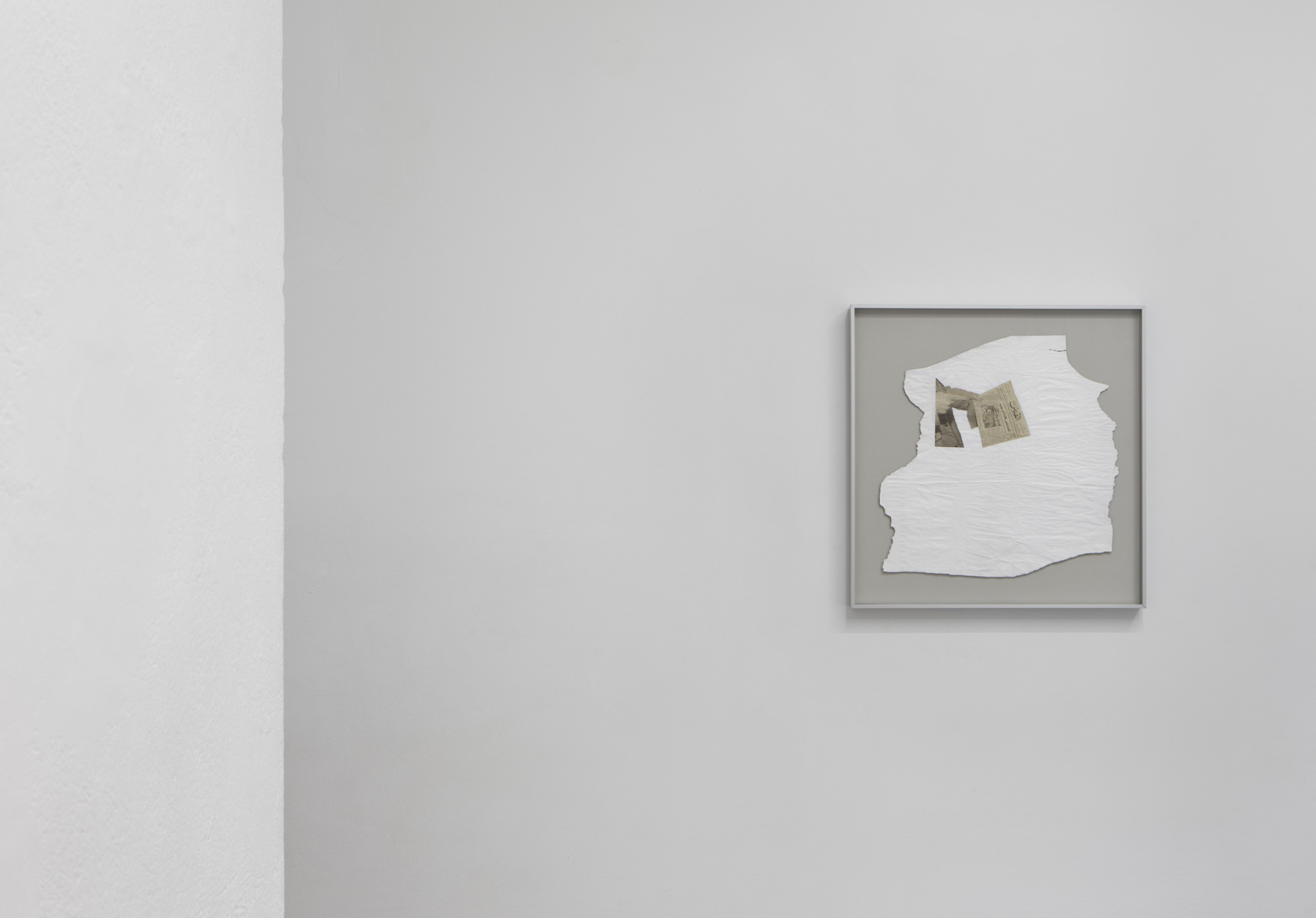POV Rubén Santiago From February 16 to April 1 Santiago
Ruben Santiago. POV. Let's think about it.
Ángel Calvo Ulloa
Rubén Santiago tells me why this exhibition is called POV. The reason is in principle purely practical, a countdown that is on its way to a zero point, and that also tries to link the projects that Rubén is developing, forcing himself to take them to the very end of the consequences. If the first exhibition in Nordés was called OMEN (O Monte É Noso), a statement that referred specifically to the struggles that took place in Galicia in the seventies for the ownership of the communal forests, but that implicitly carried many of the causes that the people faced in those years of the myth called Transition, POV uses a question as broad as the notion of the point of view (Point Of View). And the point of view, far from its denomination as a concept, that which forces us to write it in capital letters, is a false singular.
The photographic point of view, perhaps the one that comes closest to what Rubén Santiago wants to address with his mention, has been treated in abundance by the theory of photography throughout the twentieth century, which went from highlighting, compared to painting, the benefits of the objectivity of the lens, to later discovering the subjectivity of the eye, the lost innocence of our gaze. Along these lines, the theorist and photographer Takuma Nakahira stated in 1972 that even a single photograph taken by a single photographer is the result of a choice. And he added that the reality captured in a photograph -a centimeter more to the right or more to the left- unfolds another reality that resembles it without being the same. I understand that Rubén Santiago's choice to subtract part of the content of a series of sheets belonging to newspapers, magazines or brochures of different origins also responds to a choice that seeks to affect that communicative act, generating another subjectivity, different from the one that the information given by the document already provided.
The images that Rubén presents in POV are deprived of the text that originally enveloped them. The title of the series, X images Y words, modified according to the number of photographs and words that originally made up the pages, reduces the intentionality or choice that Nakahira speaks of to a simple numerical reference that largely subordinates perception, turning it into a mechanical action, freed from some conditioning factors, but obviously prey to others. On this issue, Nakahira also pointed out that at present -the present to which he alludes is that of 1972, but in fifty years the premonition has only just been confirmed-, the enormous quantity of printed products that are distributed daily, from newspapers and magazines to brochures and catalogs, as well as the television channels that broadcast almost all day long, expose us, whether we like it or not, to the multiplicity of realities that they produce, which are also fragmented realities.
As a fragmented reality, there is nevertheless a nuance in Rubén Santiago's point of view that provokes a game of give and take, aiming at a complicity with the spectator. And I explain: If we were to take a look at the back of each of these sheets, we would find precise information about its source, or at least the data Rubén has been able to access. There is therefore an intentionality when covering the text, that is undeniable, but this is not intended to eliminate the information in an irrevocable way, but to hide it to make evident the existence of a point of view. Also the layers of white acrylic applied on the pages, of manifest gestural charge, are far from pretending a mechanical neutrality. It is the artist's hands that are behind the gesture, and it is the artist himself who wants us to know this fact. This is what Leire Vergara questions: Can opacity still be an option today to enable collective processes and produce dissident imaginaries? Let's think of Rauschenberg's gesture erasing De Kooning's drawing, or the cracks that emerged in one of Malevich's versions of the black square. Let's think of that Daniele da Volterra nicknamed il Braghettone for lending himself to cover the genitals of the figures that Michelangelo painted in his Last Judgment. Let us think of the answer that Michelangelo himself supposedly gave to the Pope when he asked him to decorate the figures: Make the world a more decent place, and the figures will decorate themselves. And let us also think about the importance of that back side, of the b side of the objects as a source of information, as Lina Bo Bardi already thought when she presented the collection of the Museu de Arte de São Paulo on glass easels, so that what is hidden would be exposed, to show it to all the spectators. Let us think.
This will be the link that Rubén establishes between those partially veiled pages and the fifteen BASF tapes that make up Two Sided, sound recordings found around 2008, in one of the houses that the artist lived in Madrid, and which have accompanied him since then to each new home, without ever having been reproduced, their contents unknown to this day. Now the reels are presented with a tape recorder that every night, just when the gallery closes, plays them, one per day, on one of its sides, until completing the thirty sides, two per tape, without anyone being able to hear them, not even the person who presses PLAY, who at the request of the artist must wear protective headphones at that moment, one of those that serve to avoid injury from harmful sounds. Who then listens to these tapes? No one. That is why the degree of information that both we and the artist have in front of them, as well as in front of those pages whose text has been hidden, has been limited.
POV is an ongoing project, which by its nature has no end, which depends to a great extent on the point of unsatisfied curiosity to which Rubén Santiago decides to expose himself. POV is an event that could be frustrating, that makes evident the level of ignorance we face not only when we walk through the door of the exhibition, but in the day to day, when information is veiled or hidden. Walter Benjamin says: Underlining, pathetically or fanatically, the enigmatic aspect of the enigmatic, no progress is possible; we penetrate the mystery only to the extent that we find it again in the everyday, thanks to a dialectical optic that presents us with the everyday in its impenetrable condition, presenting at the same time the impenetrable in its everyday condition. Let us think.
He studied sculpture at the Faculty of Fine Arts at the Complutense University of Madrid and at the Massana School of Art in Barcelona. His artistic practice scrutinises the mechanisms by which collective memory is formed and poses a poetic and incisive reflection on how different societies manage and regulate symbolic value. His body of work unfolds through installations, contextual and site-specific projects, online mechanisms, video, objects, publications and other cultural artefacts.
Strategically adopting long-term processes and ongoing methodologies, Ruben sees his practice as an extended experience that permeates every aspect of his daily life. Public presentations of his work become negotiation tools through which he seeks to question and recalibrate definitions of the real.
Rubén Santiago has been exhibiting internationally on a regular basis since the early 2000s.
He has presented works and projects in venues such as the Van Abbe Museum, Eindhoven (Netherlands), the Centre Pompidou, Paris (France), the CCCB (Centre de Cultura Contemporánea de Barcelona), CGAC (Centro Galego de Arte Contemporánea) and CCEBA, Buenos Aires (Argentina), among others.
He has also participated in public art programmes, as well as in galleries and experimental spaces and collective projects, deploying a praxis that sometimes expands the areas of action usually attributed to the figure of the artist.
His work can be found in collections such as: CGAC, Santiago de Compostela; Fundación Caixa Galicia, A Coruña; Mediateca del C.C. Montehermoso, Vitoria-Gasteiz City Council; Fundação PLMJ, Lisbon, Portugal; Colección Luis Adelantado, Valencia and private collections.
https://rubensantiago.net/























